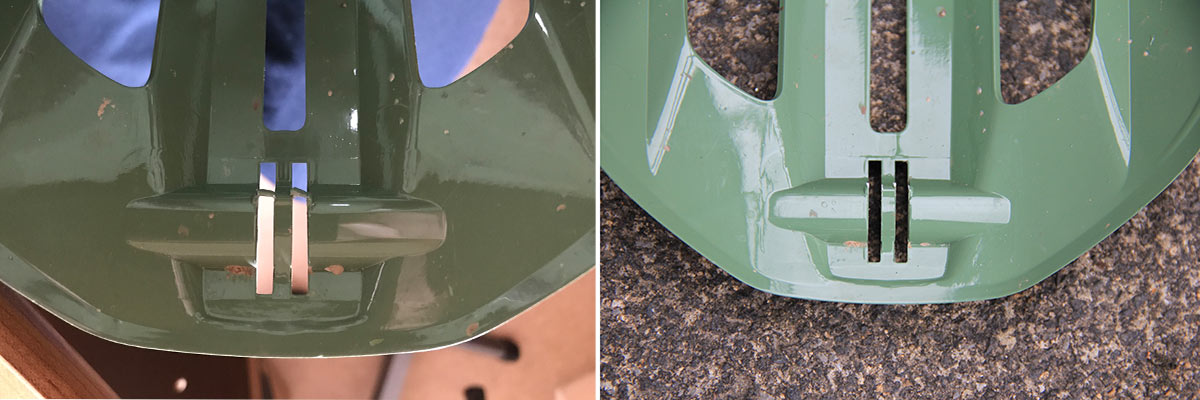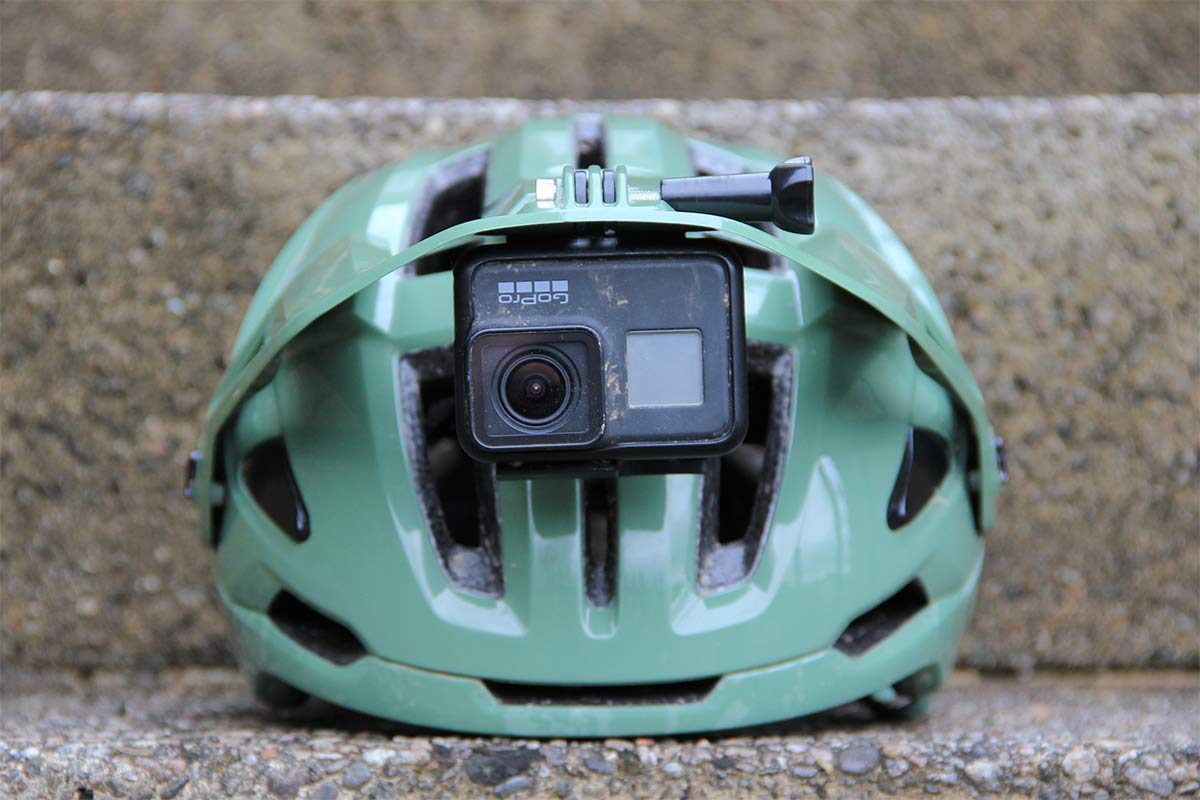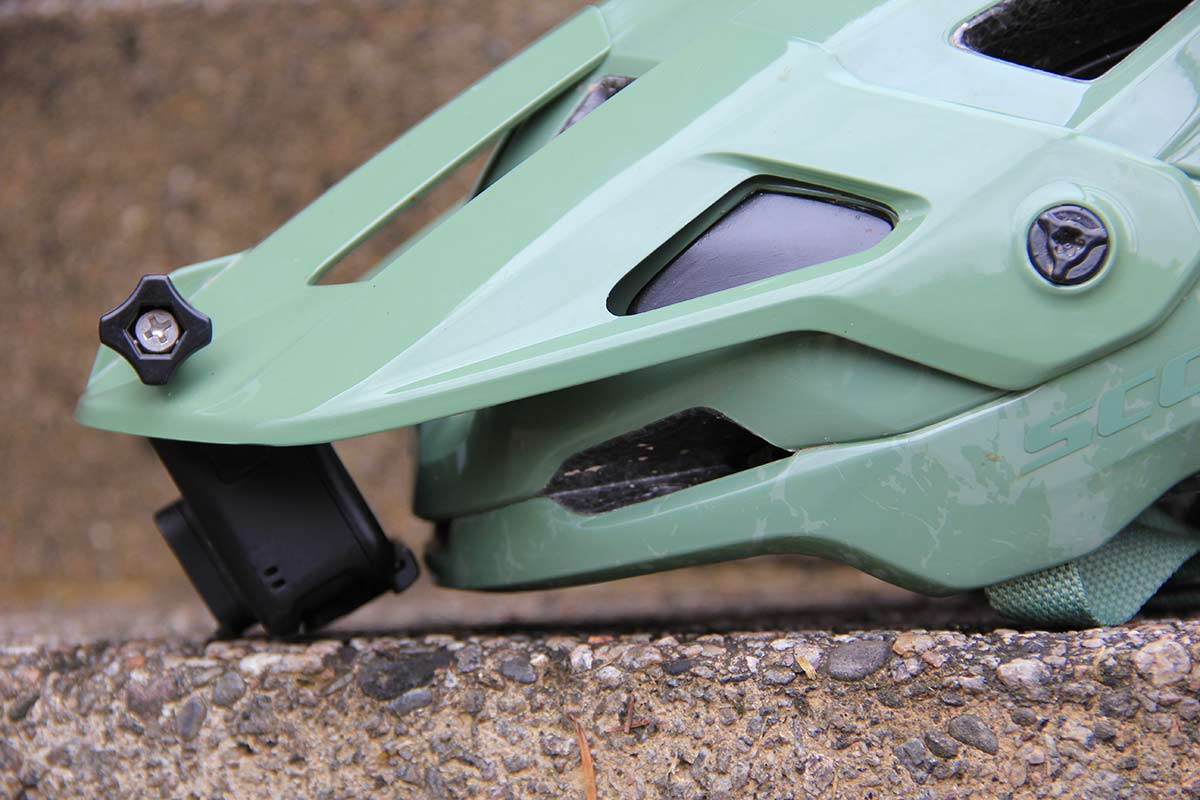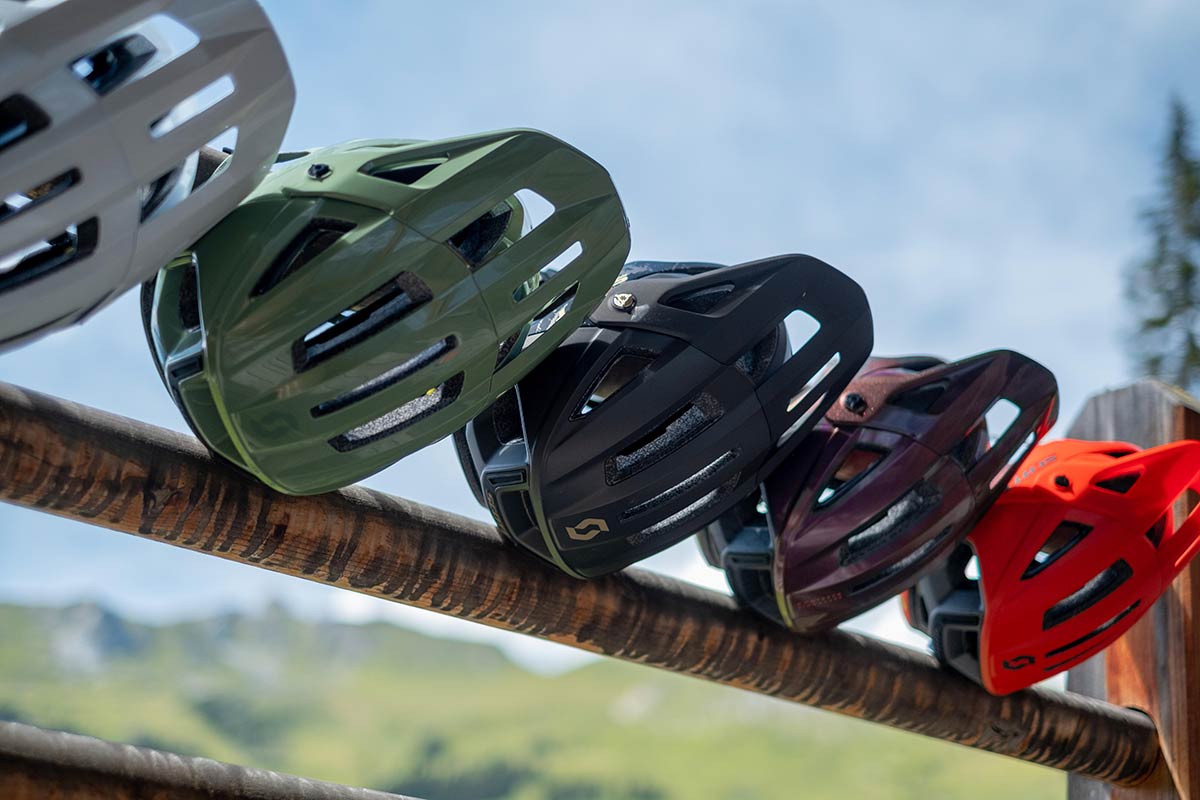The Scott Stego Plus MIPS is a mountain bike helmet retailing at £149.99. Extended coverage at the rear, ample ventilation and the peak-integrated GoPro mount piqued our interest, so we got one in to see what all the fuss was about. Here are my thoughts on Scott’s most recent head protection offering for enduro riding.
Review: Scott Stego Plus Enduro Helmet

In terms of coverage, the Scott Stego Plus wont be competing with the likes of the Giro Switchblade anytime soon. However, it still performs reasonably well in this department. Plucking two enduro helmets out of my store cupboard, the Fox Speedframe Pro and the MET Parachute MCR (half-lid conformation), I can say that the coverage is comparable.

If we concern ourselves with coverage specifically at the soft temple region, the Scott Stego Plus offers marginally more protection here than the Speedframe, and marginally less than the Parachute. The rear of the head is well catered for, while allowing space enough for a ponytail to escape under.
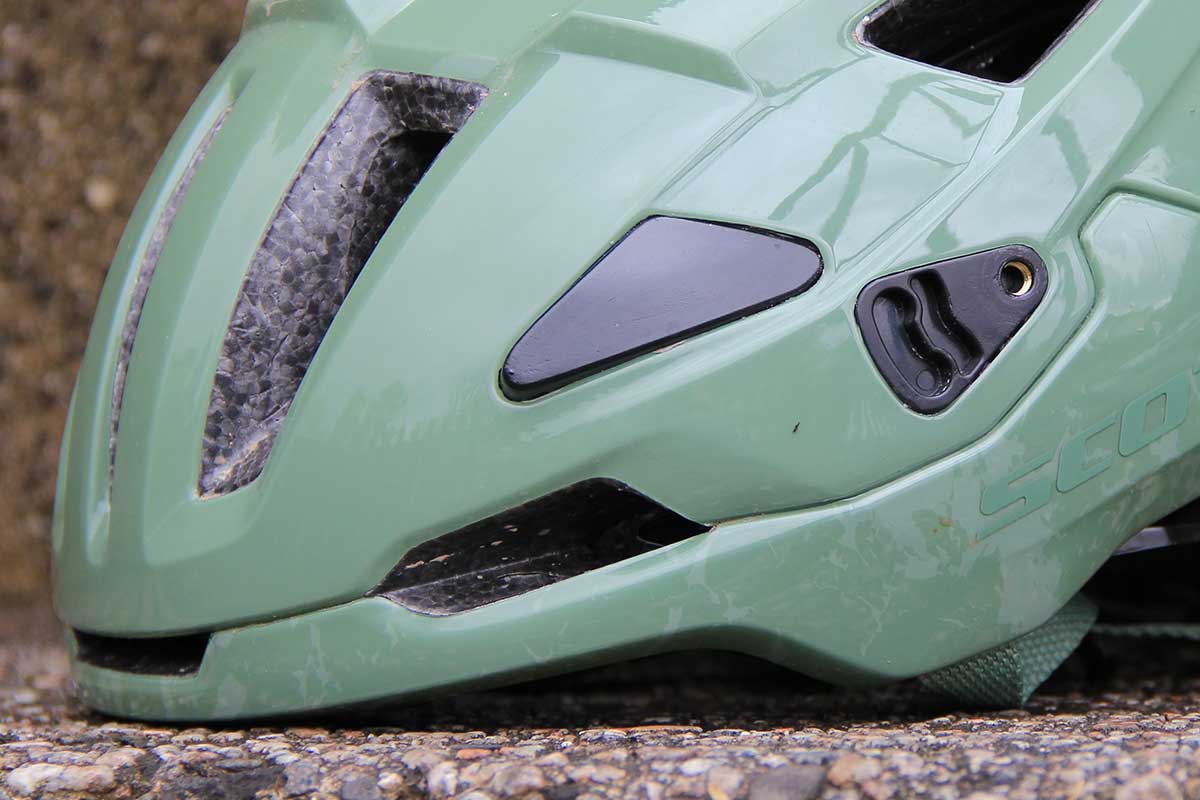
The Scott Stego Plus of course meets the minimum safety requirements for EN 1078: 2012 certification; the standard for cycle helmets. This enduro helmet protects the wearer in three ways. First, the polycarbonate micro shell with in-mold technology takes care of direct impacts. Next, PU pads seen at the front side region and at the rear are said to provide protection for low and mid-energy impacts.
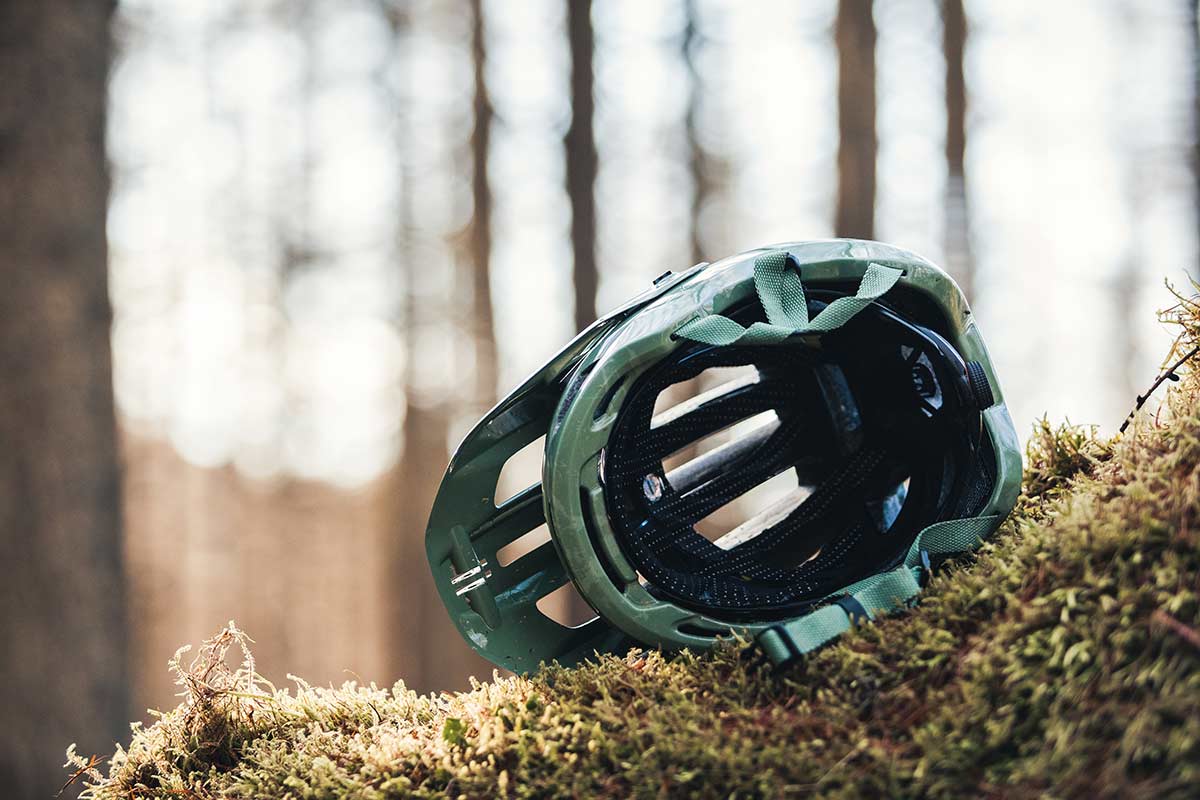
Finally, the Stego Plus takes care of rotational impacts with MIPS. A liner is able to move 10-15mm in any direction independently of the outer shell, allowing the helmet to rotate independently of the rider’s head. This rotational impact protection technology, and proprietary versions that do the same thing, reduces the risk of concussion. It is seen almost ubiquitously across the high-end MTB helmet market.
Fit & Comfort

All the protection technology in the world is going to be useless if you can’t get the right fit. I picked up a Small which caters to head circumferences of 51cm to 55cm. At 53cm, my head sits smack bang in the middle of that range, and so it didn’t surprise me at all to find that the shell was a good fit.
Not just a good fit, but a perfect fit. To date, this is my most comfortable and best fitting helmet yet. Every head is unique however, so don’t take my word for it. When it comes to buying helmets, it is great practice to try before you buy (if you can).

The dialed fit can be credited to the adjustability of the Halo 360 fitment system. A rubber dial offers 56 clicks of adjustment, so you can cinch it up as tight as you feel is necessary. Its vertical position can also be tailored too; the dial region of the fit system can be moved 1cm up or down, so you can make sure it cups the back of your skull appropriately.
The chin straps are adjustable in terms of total length while an adjustable cam divider ensures the straps that sit in front of and behind your ear can meet perfectly directly underneath the ear lobe. This is of critical importance to ensure the helmet doesn’t slip off the back of your head during an impact; this can happen if the strap in front of your ear is too long.

The Scott Stego Plus gets 16 well placed vents. Like on the Fox Speedframe, two of those sit directly at the forehead region, maximising use of the air hitting you square in the face. Six large vents at the rear serve as an exhaust for hot, sweat-filled air. The velcro-stuck comfort liner is removable and washable, so you can keep it fresh.
Peak-integrated GoPro Mount
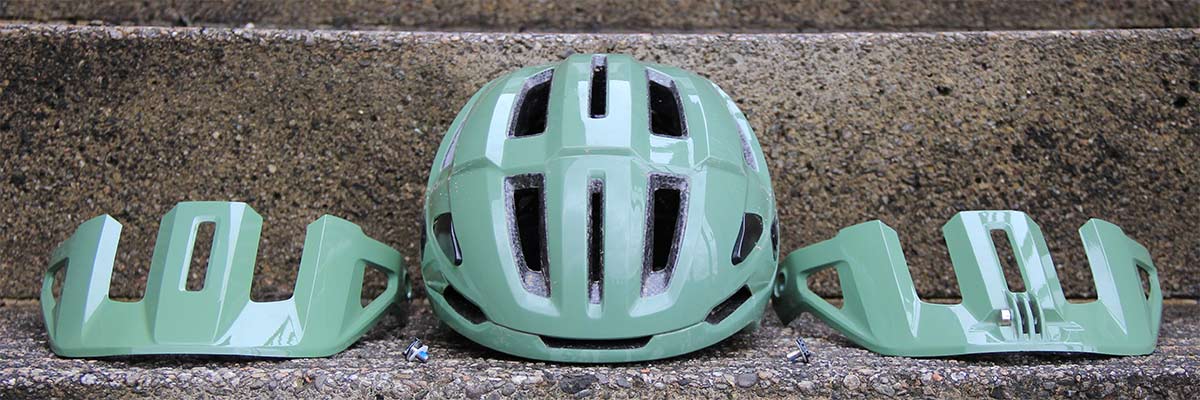
A nice feature that will pique the interest of vloggers out there (pun intended), is the peak-integrated GoPro mount (other action cameras are available). The Scott Stego Plus comes with two peaks; a standard one of generous length, and one with the integrated GoPro mount which is a smidgen shorter.

Though you can, theoretically, mount the GoPro to the top of the peak, this is not where it is intended to go. The hinge of the GoPro case actually hinders perfect placement of the GoPro, leaving you with a sub optimal angle and rubbish view of the trail ahead.
To get a class angle and view of the trail, you’ll need to mount the GoPro to the underside of the peak. We had a bit of trouble getting this to work initially. The mount area of our peak actually featured two tiny bits of plastic bridging the gaps that serve as slots for the GoPro case. We had to cut these away to position the GoPro correctly.
With the surplus plastic out of the way, the GoPro case slid into position without any trouble. Here, it gives a really good view of the trail ahead. It’s nice to not have to deal with the usual adhesive strips for mounting the action camera.
With the peak in its lowest position (of three) the GoPro case comes very close to the front of the helmet. A bit of flex in the peak means the camera can knock off the front of the helmet repeatedly as you go over bumps. I’d recommend putting a thin strip of mastic here to protect the helmet graphics and damp the knocking. This won’t be an issue if you cover your GoPro case in a foam windshield.
Can we recommend the Scott Stego Plus enduro helmet?

Absolutely. One thing I forgot to mention… the Scott Stego Plus is a quiet helmet. That may seem a strange thing to comment on, but other helmets featuring MIPS do have a tendency to creak a little. The Fox Speedframe Pro being one.
And another thing. The helmet pairs nicely with Smith Squad goggles. In the peak’s highest position, there is plenty of room to stow them underneath when you don’t need them.
Pricing & Availability
The Scott Stego Plus Enduro Helmet is available in six different colorways. Pick one up for £149.99.
